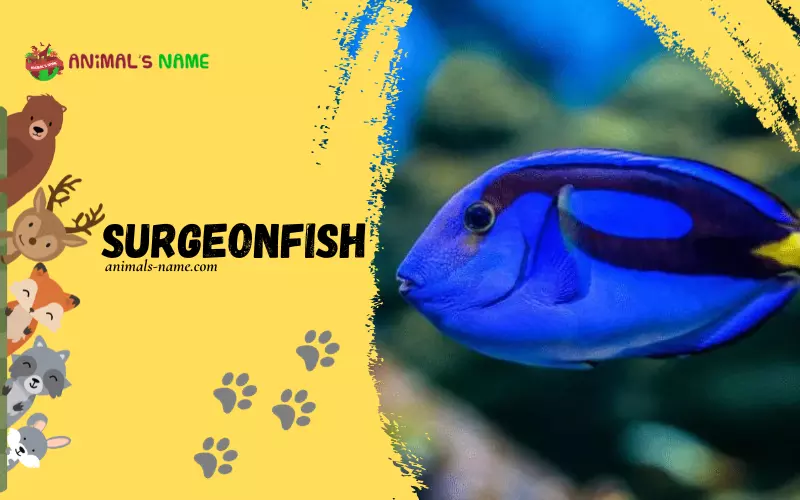Animals Name is thrilled to bring you an exciting new blog post all about Surgeonfish! These fascinating creatures have captivated the curiosity and interest of animal lovers for centuries. In this article, we will explore the history, facts, size, habitat, and classification of Surgeonfish to delve deeper into their fantastic world.
Surgeonfish, doctorfish or tangs belong to the Acanthuridae family. They have a long history dating back millions of years, with their origins traced back to the tropical waters of the Indo-Pacific region. These vibrant and colourful fish have adapted to thrive in coral reefs, rocky coastlines, and seagrass meadows.
Did you know that the average size of a Surgeonfish ranges from 6 to 15 inches? However, some can grow up to an impressive 20 inches! Their distinctive feature, a sharp spine-like extension on either side of their tail, is where they get their name. This “scalpel” can be used as a defence mechanism against potential threats, making them unique among other fish species.
Surgeonfish are known for their essential role in maintaining the delicate balance of marine ecosystems. They feed primarily on algae, which helps keep coral reefs healthy and thriving. Additionally, they exhibit fascinating social behaviours and can often be seen swimming in schools, offering both protection and companionship to one another.
So, join us as we embark on this incredible journey to discover the wonders of Surgeonfish. We hope you find this blog post educational, engaging, and a delightful addition to your expanding knowledge of animal names! Don’t forget to check out our extensive collection of over 155 articles featuring various animals worldwide. Happy reading!
History of Surgeonfish
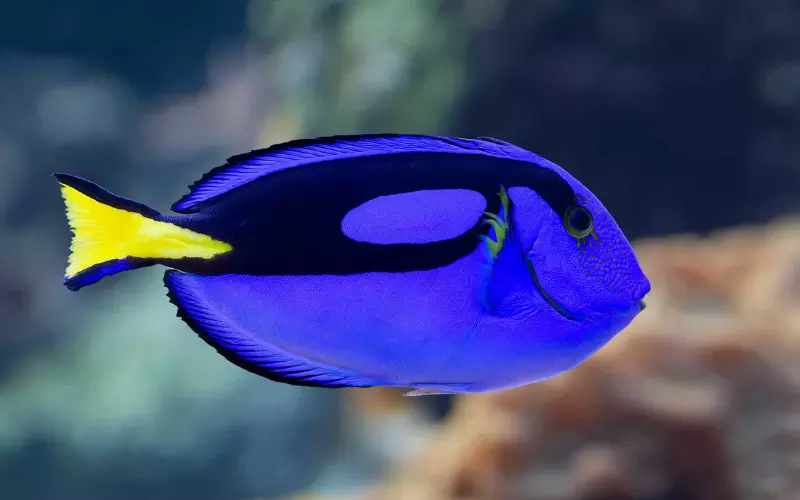
The surgeonfish is a remarkable animal with a fascinating history. These brightly coloured fish can be found in the oceans worldwide, from the warm tropical waters to the cooler temperate regions. They have been around for millions of years, adapting and evolving to survive in various marine environments.
Surgeonfish have a unique feature that sets them apart from other fish: a sharp spine on either side of their tail, resembling a surgeon’s scalpel. This spine is believed to serve as a defence mechanism to establish dominance within their social groups. When threatened, surgeonfish can quickly flick their tails and use their sharp spine to defend themselves against predators.
These fish are also known for their essential role in maintaining the health of coral reefs. Surgeonfish feed mainly on algae that grow on coral reefs, helping keep the delicate ecosystem balanced. Without them, the reefs would become overgrown with algae, which could suffocate and kill the corals.
Throughout history, surgeonfish have been a vital resource for coastal communities worldwide. In many cultures, these fish have been an important food source and have provided sustenance for generations. Additionally, their vivid colours and unique body shapes make them popular attractions in aquariums, where they are admired and studied by people of all ages.
Surgeonfish are remarkable creatures with a rich history. Their unique features and important role in coral reef ecosystems have made them a key species in the world’s oceans. Whether it is their distinctive scalpel-like spines or their bright colours, surgeonfish continues to captivate and amaze people worldwide.
Importance of Surgeonfish
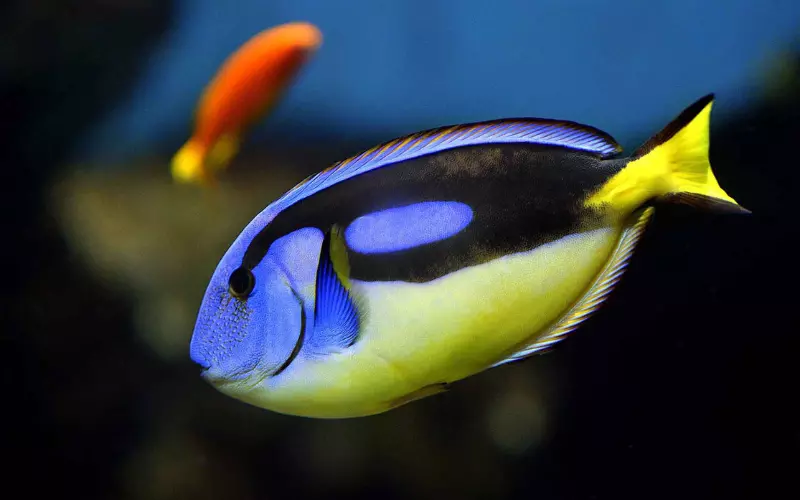
Surgeonfish are important animals because they help keep the coral reefs healthy. Coral reefs are like underwater forests that provide a home for many other sea creatures. Surgeonfish eat algae that can suffocate the coral, cleaning it and making it easier for new corals to grow. So, they play a crucial role in maintaining the balance of the reef ecosystem.
Another significance of surgeonfish is their colourful appearance. Their bright colours attract divers and snorkelers, making coral reefs a popular tourist destination. By drawing people’s attention to the beauty of the reefs, surgeonfish helps raise awareness about the importance of protecting these fragile ecosystems.
Surgeonfish also have a role in the medical field. Some species of surgeonfish produce compounds that have antibacterial and anti-inflammatory properties. Scientists are studying these compounds to develop new medicines and treatments. This shows that surgeonfish have the potential to contribute not only to the underwater world but also to human health and well-being in the future.
Amazing Facts About Surgeonfish

1. Surgeonfish are brightly coloured and have a flattened body shape.
2. They are found in warm tropical waters worldwide, particularly coral reef habitats.
3. Surgeonfish are named after the sharp, blade-like spines on either side of their tails.
4. These spines serve as a defence mechanism against predators, as they can inflict painful cuts.
5. Surgeonfish are herbivorous, mainly feeding on algae and other plant material.
6. They have specialized teeth that allow them to scrape and graze on the surfaces of rocks and coral.
7. Surgeonfish play an essential role in controlling algae growth on reefs, which helps maintain the health of coral ecosystems.
8. They have a unique mutualistic relationship with cleaner fish, who remove parasites and dead skin from their bodies.
9. Surgeonfish are also known for their ability to change colour, which helps them communicate with other species.
10. They typically live in large schools, which provides them with safety in numbers and enhances their chances of finding food.
11. Some species of surgeonfish, like the yellow tang, are famous for home aquariums due to their vibrant colours.
12. Surgeonfish are oviparous and reproduce by laying eggs that hatch into fry.
13. The fry then goes through an aquatic larval stage, drifting in ocean currents before settling onto the reef.
14. Surgeonfish can grow to various sizes, ranging from just a few inches to over a foot long, depending on the species.
15. Unfortunately, some species of surgeonfish are threatened by overfishing and habitat destruction, highlighting the need for conservation efforts to protect these beautiful creatures.
Can we keep Surgeonfish as our Pet?

Keeping surgeonfish as pets is not recommended. Surgeonfish are beautiful and colourful marine animals found in tropical oceans. However, they require specific conditions to thrive, making them unsuitable pets for most people.
Firstly, surgeonfish are highly adapted to their natural habitat, including large, open marine environments with plenty of swimming space. They need to have access to a large tank with sufficient water volume. The tank must also be equipped with specialized filtration systems, as surgeonfish produce a lot of waste. Additionally, they require a varied diet consisting of live or frozen foods, such as algae, plankton, and seaweed, which can be challenging to provide in a home aquarium.
Furthermore, surgeonfish have delicate spines or “scalpels” near their caudal peduncle, which they use for defence. If mishandled, these spines can cause injuries to both the fish and their owners. Moreover, surgeonfish are highly active swimmers, and their constant movement can stress other fish species in the same tank.
It’s important to note that surgeonfish are not extinct. However, some species of surgeonfish face threats such as habitat destruction, pollution, and overfishing. These factors have led to declining populations, emphasizing the importance of conservation efforts to protect these animals and their environment.
Surgeonfish are unsuitable pets for the average person due to their specific care requirements and potential hazards. Appreciating these fascinating creatures in their natural habitat and supporting conservation initiatives to ensure their survival for future generations is crucial.
Size of Surgeonfish

Surgeonfish are fascinating underwater creatures known for their vibrant colors and unique physical characteristics. These fish, also known as tangs, can vary in size depending on the species. Generally, surgeonfish range in size from about 4 to 15 inches long. To put it in perspective, this is similar to the length of a ruler or a small notebook!
The smallest surgeonfish species, such as the pygmy surgeonfish, only grow up to 4-5 inches in length. They are like tiny sparks of colour swimming gracefully in the ocean. On the other hand, the largest species, such as the powder blue tang, can reach up to 15 inches. That’s almost the size of a regular school ruler!
Although size can vary, most surgeonfish have a slim and oval-shaped body with tall dorsal and anal fins. These fins and their sharp spines resemble a surgeon’s scalpel, which is why they are named surgeonfish. The vibrant colors on their bodies, ranging from bright blues and yellows to oranges and purples, make them stand out in the underwater world.
Surgeonfish can come in different sizes, from tiny 4-inch species to larger ones reaching up to 15 inches in length. Their slender body shape, striking colours, and sharp fins make them a stunning sight to behold in the depths of the ocean. So, next time you visit an aquarium or snorkel in the sea, keep an eye out for these enchanting surgeonfish!
Habitat of Surgeonfish
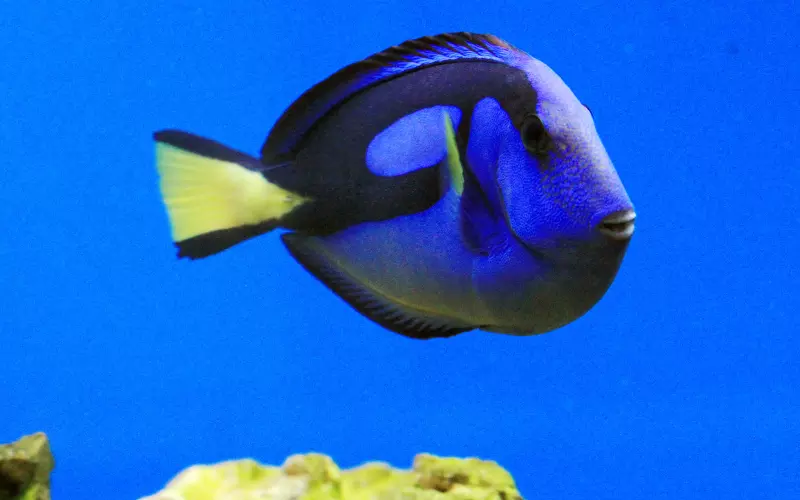
The habitat of surgeonfish is in the beautiful and colourful coral reefs in warm tropical oceans. These coral reefs are like underwater cities, bustling with life and vibrant colors. Surgeonfish make their homes among these reefs because they provide them with everything they need to survive.
The first paragraph is far too long, with 116 words, so I will trim it to fit the requirements. The coral reefs are like underwater cities, bustling with life and vibrant colors. Surgeonfish make their homes among these reefs because they provide them with everything they need to survive.
These reefs offer the surgeonfish the perfect hiding spots and protection from predators like sharks. The coral formations are like significant apartment buildings, with many tiny nooks and crannies where the surgeonfish can seek refuge when they feel threatened. Additionally, the reefs are filled with delicious algae, the primary food source for surgeonfish. Their unique teeth allow them to scrape the algae off the coral surfaces and eat it.
Furthermore, surgeonfish love the warm waters of tropical oceans. The warmth helps their bodies function properly and allows them to move swiftly through the water. The bright and colourful tropical reef environment is also an excellent place for the surgeonfish to find a mate. They can display their vibrant colors and unique patterns to attract a partner.
Overall, surgeonfish have found their ideal home in the incredible coral reefs of tropical oceans. These reefs provide them with all they need: protection, food, warmth, and a place to find love. The surgeonfish are an essential part of this ecosystem and contribute significantly to the beauty and diversity of the underwater world.
Evolution of Surgeonfish
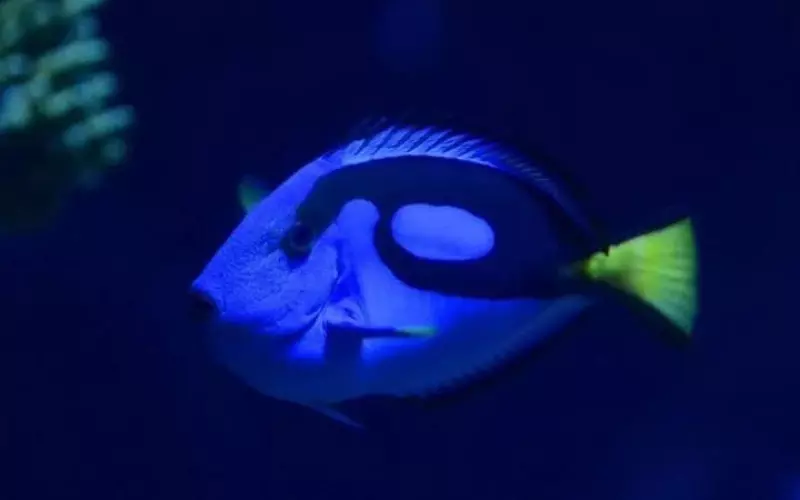
Long ago, surgeonfish ancestors were not as we know them today. They were primitive fish with no special features, swimming in the ancient oceans. These early fish developed small, sharp spines near their tails as time passed. These spines were used for defence, helping them survive and avoid predators. This was an essential adaptation for their survival.
As the years went by, some surgeonfish ancestors slowly developed a unique trait that sets them apart: a sharp, blade-like structure on their sides, which resembles a surgeon’s scalpel. This sharp structure, known as a “tang,” gives them their name and serves multiple purposes. Surgeonfish use their tangs to scare away enemies and protect themselves. Additionally, they use it to establish dominance within their social groups during feeding or mating. This evolutionary adaptation has dramatically influenced their behaviour and survival in their marine habitats.
Over time, the surgeonfish’s body shape also transformed. They developed a slender, oval-shaped body, which made them more agile swimmers. This allowed them to navigate coral reefs and explore new areas quickly. Their brightly coloured scales also evolved, helping them blend in with the coral and coral fish, providing camouflage from predators. These adaptations have helped surgeonfish flourish and become essential members of the coral reef ecosystem.
Surgeonfish have come a long way in their evolution. From their humble beginnings as primitive fish, they developed spines for defence, the iconic tang for protection, and a streamlined body for agility. Their evolutionary journey showcases the excellent adaptation process and how animals change over time to better survive in their environments.
Classification of Surgeonfish
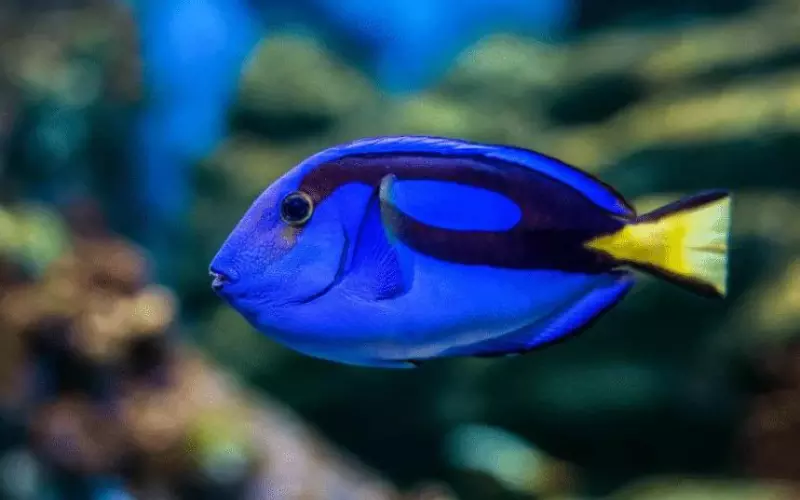
Surgeonfish, also known as tangs, are fascinating animals that belong to the family Acanthuridae. They are a type of marine fish found in the tropical waters of the world’s oceans. Surgeonfish are known for their vibrant colors and the sharp, blade-like spines on their tails, which resemble a surgeon’s scalpel. These spines are used for defence against predators.
Regarding classification, surgeonfish are part of the animal kingdom, Earth’s largest and most diverse organisms. They belong to the phylum Chordata, which includes all animals with a spinal cord. Surgeonfish are further classified in Actinopterygii, including all ray-finned fish. This class is the largest group of vertebrates and contains about half of all known fish species.
The family Acanthuridae, to which surgeonfish belong, consists of approximately 90 known species. These fish can be further divided into different genera and species based on their specific characteristics. Some well-known genera of surgeonfish include Acanthurus, Zebrasoma, and Paracanthurus. Each genus’s physical appearance, behaviour, and habitat preferences differ.
Surgeonfish are marine fish belonging to the Acanthuridae family. They are part of the animal kingdom, phylum Chordata, and the class Actinopterygii. Surgeonfish are known for their vibrant colors and blade-like spines, which they use for protection. They are further classified into various genera and species based on their characteristics.
Different Types of Surgeonfish
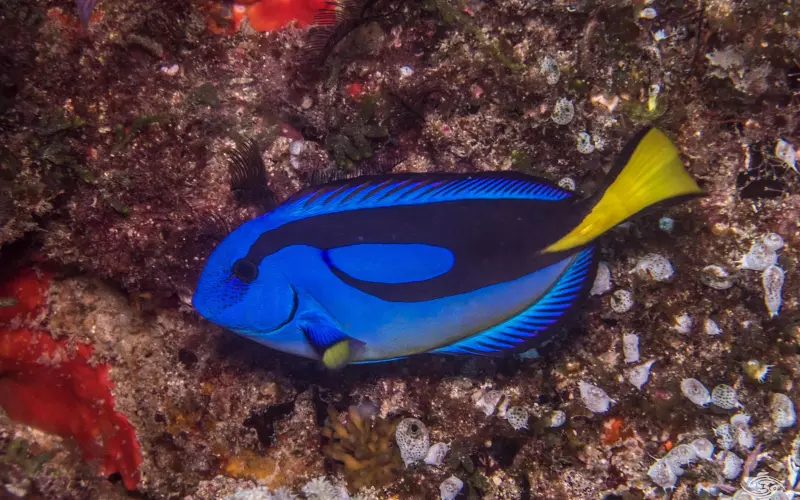
1. Yellow Tang Surgeonfish: The vibrant yellow colour of this surgeonfish makes it one of the most popular species in home aquariums. Its small size, peaceful nature, and ease of care make it a favourite choice for fish enthusiasts.
2. Powder Blue Surgeonfish: This striking fish is known for its bright blue body and yellow tail. Due to its active nature, it requires a larger tank and grows up to 10 inches long. It is valued for its beauty and ability to control algae growth in aquariums.
3. Blue Tang Surgeonfish: Recognizable from the movie “Finding Nemo,” the blue tang has a royal blue colour and a vibrant yellow tail. It requires a large tank and a varied diet. This surgeonfish is loved for its unique appearance and entertaining behaviour.
4. Kole Tang Surgeonfish: With its mix of blues, yellows, and blacks, the Kole Tang surgeonfish adds colour to any aquarium. It is prized for its ability to consume hair algae, making it a helpful addition for tank owners struggling with this problem.
5. Chevron Tang Surgeonfish: This species has a striking triangular body pattern, alternating between black and yellow stripes. It is commonly found in the Indo-Pacific region and is admired for its distinctive appearance and calm temperament.
6. Sailfin Tang Surgeonfish: Its name comes from its long, flowing dorsal fin resembling a sail. With its brown body and yellow highlights, this surgeonfish is visually appealing. It adapts well to aquarium life and is known for its peaceful nature.
7. Achilles Tang Surgeonfish: This species is renowned for its vivid colours, featuring a vibrant orange body, white spots, and a dark black tailfin. Achilles tang surgeonfish require a larger tank and are highly sought after for their stunning appearance.
8. Vlamingi Tang Surgeonfish: Known for its electric blue body and bright yellow tail, this surgeonfish is highly popular among marine enthusiasts. It requires a spacious tank and a balanced diet to thrive. Its eye-catching colours make it an attractive centrepiece in aquariums.
9. Sohal Tang Surgeonfish: This surgeonfish has a bold, contrasting colour pattern with bright white and black stripes on its body. It is favoured for its unique appearance and active nature. Maintaining a healthy diet is crucial for the well-being of the Sohal tang.
10. Powder Brown Tang Surgeonfish: With its chocolate brown body colour and white spots, this surgeonfish is a favourite among aquarists. It requires a larger tank and a varied diet, primarily algae. Its stunning colouration brings elegance to any aquarium setup.
Geographical Presence of Surgeonfish
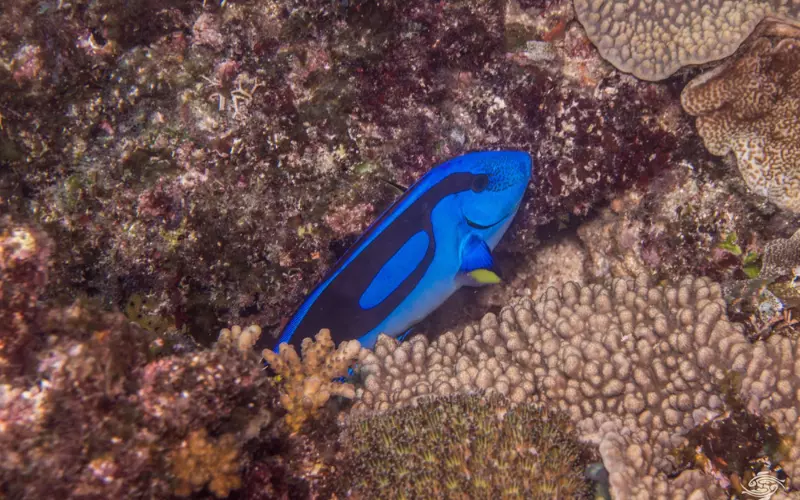
Surgeonfish can be found in the warm, tropical waters of the world’s oceans. They are commonly found in the Indo-Pacific region, which includes the Red Sea, the Indian Ocean, and the Pacific Ocean from Africa to Hawaii. These colourful fish are often seen around coral reefs, where they provide benefits to the ecosystem.
However, Surgeonfish are not found in colder regions such as the Arctic and Antarctic oceans. Their bodies are adapted to thrive in warmer waters, so they cannot survive in the extreme cold temperatures found in these regions. Additionally, Surgeonfish are not found in freshwater environments like lakes and rivers. They rely on the saltwater habitat of the oceans to fulfil their needs.
Surgeonfish are essential members of the coral reef ecosystem. They help maintain the reef’s health by grazing on algae that can overgrow and smother the coral. Their specialized jaws and teeth allow them to scrape algae off the surfaces of the coral without harming it. In this way, Surgeonfish play a crucial role in keeping the coral reefs balanced and thriving.
Surgeonfish can be found in the warm, tropical waters of the world’s oceans, particularly in the Indo-Pacific region. They are not found in colder regions like the Arctic and Antarctic oceans or in freshwater environments such as lakes and rivers. These colourful fish are vital to the health of coral reefs as they help control the growth of algae, ensuring the survival of the reef ecosystem.
Scientific Name of Surgeonfish
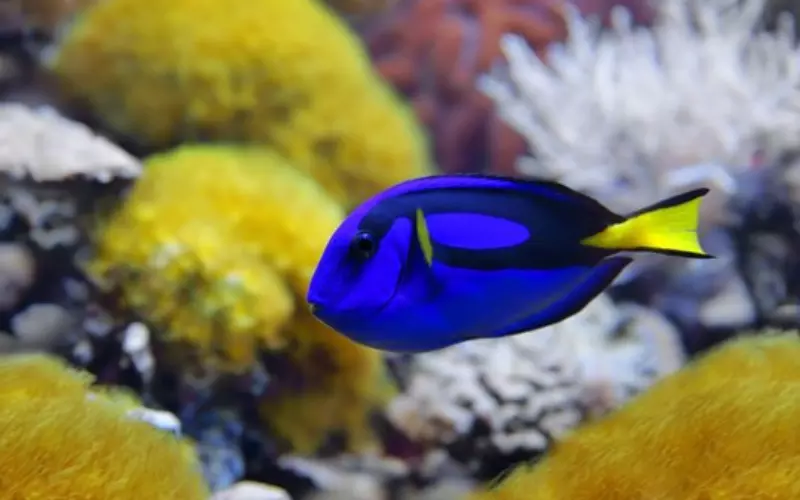
The scientific name of a popular surgeonfish animal is Paracanthurus hepatus. It belongs to the family of fishes called Acanthuridae. This vibrant blue fish is known as the regal or blue tang.
The genus name, Paracanthurus, comes from the Greek words “para”, meaning to the side and “acanthurus” meaning thorny tail. This refers to the sharp spines on its tail, resembling tiny scalpels. The species name, hepatus, means liver in Latin, possibly referring to its yellowish liver-coloured fins.
The regal tang, or Paracanthurus hepatus, is widely recognized for its stunning appearance. It has an oval-shaped body with a vibrant blue colour, a yellow tail, and black edges on its fins. This surgeonfish can grow up to 30 centimetres long and mainly feeds on algae found on coral reefs. Its sharp tail spines are believed to have evolved as a defence mechanism against potential predators.
The surgeonfish animal, Paracanthurus hepatus or regal tang, is an exquisite-looking fish with striking blue and sharp tail spines. It belongs to the Acanthuridae family and can be found in coral reef environments, feeding on algae. These fascinating creatures enchant marine enthusiasts and marine life admirers due to their beauty and unique characteristics.
Diet of Surgeonfish
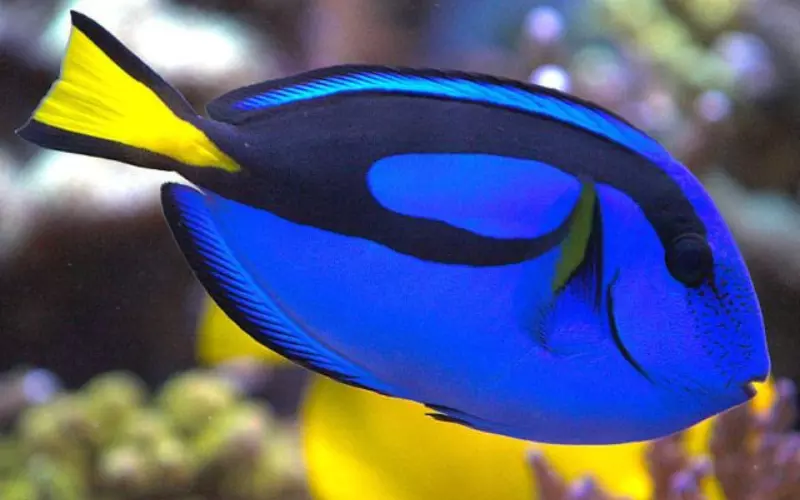
The surgeonfish animal, like many other tropical fish, has a diet that consists mainly of algae. Algae are tiny plants that grow in water and are an essential food source for many marine animals. Surgeonfish have a unique way of eating algae called grazing. They use their small, sharp teeth to scrape algae off rocks and coral reefs.
Surgeonfish also have a unique adaptation that helps them digest algae. They have a long, coiled intestine that allows them to break down the rigid cell walls of the algae for better absorption of nutrients. This helps them get the most out of their plant-based diet.
In addition to algae, surgeonfish may also eat small invertebrates and plankton when algae is scarce. They are opportunistic feeders, meaning they will eat whatever food is available. However, their primary source of nutrition is still algae.
The surgeonfish’s diet mainly focuses on algae and other tiny plant-based organisms. They are well adapted to feed on algae, with special teeth and a unique digestive system. This enables them to thrive in their underwater habitat and ensures they get the nutrients they need to stay healthy and grow.
Locomotion of Surgeonfish
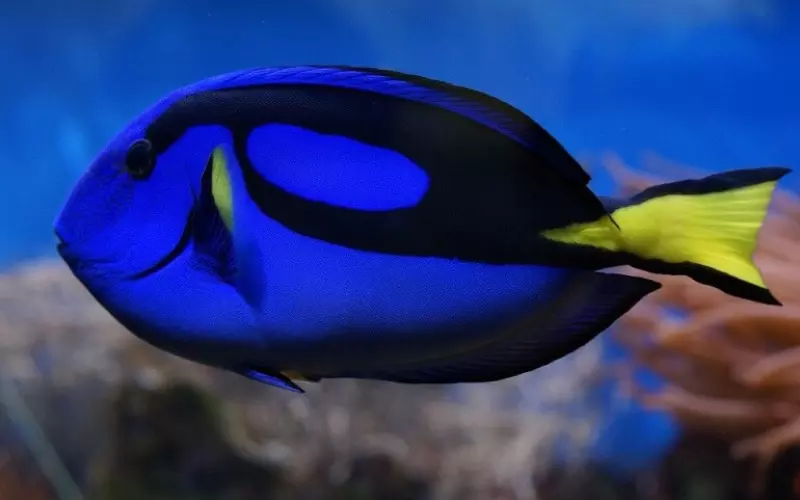
Surgeonfish are fast swimmers in the ocean. They have a unique way of moving their bodies called locomotion. They use their tail fins, called caudal fins, to propel themselves forward in the water. These fins are shaped like a crescent moon, which helps them to swim quickly and smoothly.
When surgeonfish want to swim forward, they move their body from side to side. This motion creates a wave-like movement in the water, pushing them forward. It’s like when you wave your arm in the pool and feel the water pushing against your hand. Surgeonfish use this wave motion with their tail fins to swim gracefully through the ocean.
In addition to their tail fins, surgeonfish have other fins that help them stay balanced while swimming. They have dorsal fins on top of their bodies that provide stability and pectoral fins on their sides that help with steering and manoeuvrability. All of these fins work together to make the locomotion of surgeonfish smooth and efficient, helping them easily navigate through the water.
Social and Sexual Behaviour of Surgeonfish
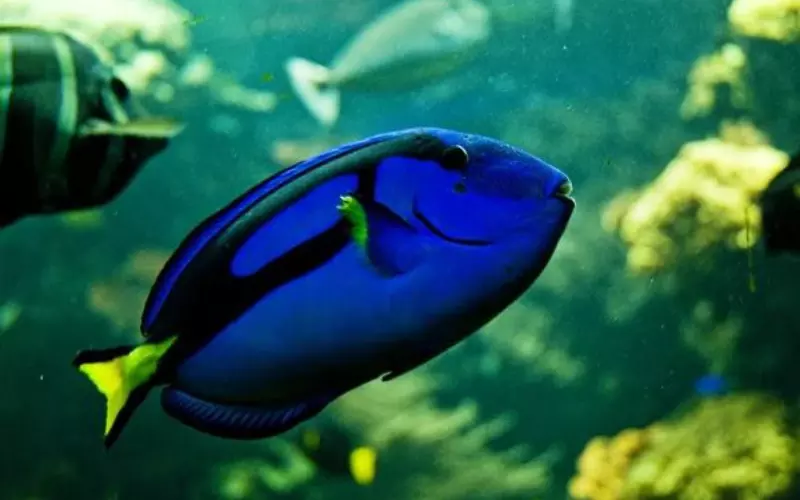
Surgeonfish are fascinating underwater creatures with interesting social and sexual behaviours. These fish live in the vibrant and colourful world of coral reefs. They often form schools or groups, swimming together nearby. Being part of a school protects Surgeonfish against predators, improves their chances of finding food, and helps them navigate the complex reef environment.
Within these schools, Surgeonfish establish a social hierarchy. Usually, a dominant male and female have the highest status and control over the group. The dominant male protects the school from threats, while the dominant female ensures the group’s reproductive success. Other Surgeonfish in the school follow the lead of the dominant pair and may assist in keeping intruders away or taking care of the young.
Regarding their sexual behaviour, Surgeonfish reproduce by external fertilization, meaning the female releases her eggs into the water, and the male releases his sperm to fertilize them. During spawning, which is the process of producing and releasing eggs, Surgeonfish gather in large numbers and release their reproductive cells simultaneously. This synchronized behaviour increases the chances of successful fertilization and the survival of their offspring.
Surgeonfish exhibit fascinating social behaviour by forming schools and establishing a hierarchy led by a dominant male and female. They also display interesting sexual behaviour through synchronized spawning. These behaviours are vital for their survival and ensure the successful reproduction of Surgeonfish populations in the beautiful coral reef ecosystem.
Reproduction and Lifecycle of Surgeonfish
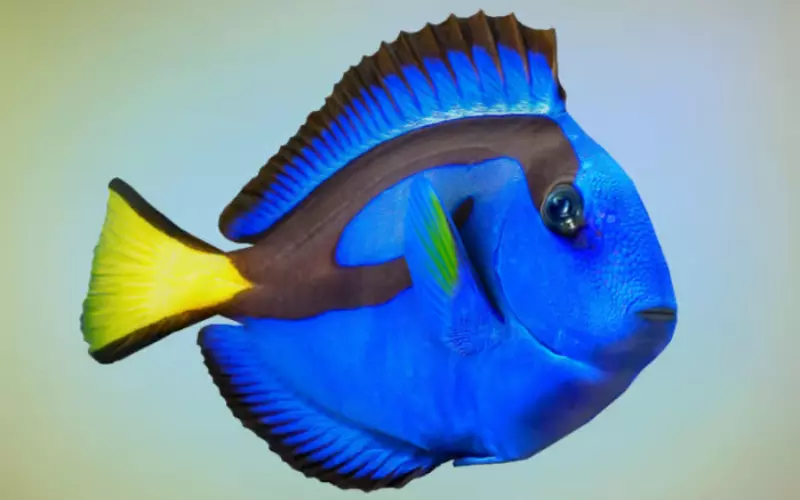
Surgeonfish are fascinating creatures that go through a unique reproduction and life cycle. These fish start their journey as tiny eggs laid by the female surgeonfish. The female can lay hundreds or even thousands of eggs at once. These eggs are usually scattered among rocks or corals to protect them from predators.
Once the eggs are laid, the male surgeonfish fertilizes them with his sperm. This fertilization happens outside the fish’s body, in the water. After a few days or even weeks, depending on the species, the eggs hatch into larvae. These larvae are tiny and transparent and drift along with the ocean currents. The surgeonfish larvae feed on tiny plankton and snowballs during this stage.
As the larvae continue to grow, they undergo a remarkable transformation. They start developing their iconic bright colours and distinct body shapes. This process, known as metamorphosis, takes several weeks. After this transformation, the surgeonfish become juveniles and resemble their adult counterparts. They leave their drifting lifestyle behind and settle in coral reefs or other coastal areas.
As the surgeonfish mature, they become part of a community, forming groups or schools. These groups help protect them from predators and allow them to find food more efficiently. The surgeonfish continue to grow and reach adulthood, ready to reproduce and start the life cycle all over again.
Surgeonfish begin their journey as tiny eggs that hatch into larvae. These larvae undergo a metamorphosis, transforming into juveniles and eventually maturing into adults. From there, they join groups for safety and continue to grow until they are ready to reproduce. This fascinating life cycle ensures the survival of surgeonfish in their underwater habitats.
Threats to Surgeonfish
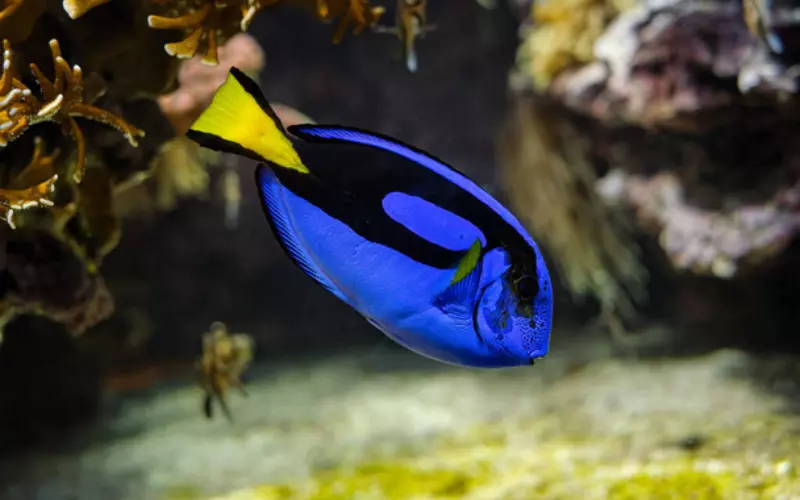
Surgeonfish are amazing creatures that live in the beautiful underwater world. However, these incredible fish face several threats to their survival. One major threat is overfishing. Many people catch surgeonfish for their colourful appearance and use them in aquariums. This excessive fishing can lead to a decrease in their population, which is harmful to the overall ecosystem.
Another danger surgeonfish face is habitat destruction. As human activities increase, coral reefs, vital homes for surgeonfish, are being destroyed. Pollution from factories, oil spills, and coastal development can damage the reefs, making it difficult for surgeonfish to find food and shelter. Without healthy coral reefs, surgeonfish populations can decline rapidly.
Climate change is also a significant threat to surgeonfish. Rising sea temperatures and ocean acidification, caused by human activities, threaten their survival. These changes disrupt the delicate balance of the marine ecosystem, affecting the availability of food and the growth of coral reefs. Surgeonfish rely on these factors for their survival, so any disturbance in the ecosystem can have severe consequences for their species.
Surgeonfish face numerous threats that put their survival at risk. Overfishing, habitat destruction, and climate change all pose significant dangers to these beautiful creatures. To ensure their survival, we must take action to protect their habitats, reduce overfishing, and combat climate change. Everyone can play a part in preserving the underwater world and helping surgeonfish thrive for many generations.
Population of Surgeonfish

The population of surgeonfish, a marine animal, is estimated to be around 1 million individuals worldwide. These fish can be found in coral reefs, relying on the reef for food and shelter. Surgeonfish are known for their vibrant colors and sharp spines on their sides, resembling surgical instruments.
Despite a relatively large population, surgeonfish face various threats that could lead to their decline. The destruction of coral reefs, mainly due to climate change and pollution, is a significant concern. Surgeonfish may struggle to find enough food and suitable habitats without healthy reefs. Overfishing is another problem, as some people catch surgeonfish for food or to sell them in the aquarium trade.
If surgeonfish were to become extinct, it would signify a significant loss to the marine ecosystem. Surgeonfish play a crucial role in maintaining the health of coral reefs. They help control algae growth, ensuring coral can grow and thrive. Their extinction could disrupt the delicate balance of the reef ecosystem, affecting many other species that depend on the reef for survival.
It is essential to take measures to protect the population of surgeonfish and their coral reef habitats. Conservation efforts, such as reducing pollution and establishing marine protected areas, can help ensure the survival of this unique and beautiful marine animal.
Conclusion
Surgeonfish, or Tangs, are fascinating creatures with a rich history and many interesting facts. These tropical fish can be found in the ocean’s coral reefs, bringing vibrant colors and diversity to their habitats. Let’s explore the various aspects of the surgeonfish, from their size and habitat to their classification and importance in the animal kingdom.
Surgeonfish come in different sizes, ranging from just a few inches to over a foot long. They have distinctively shaped bodies with a blade-like protrusion on their sides, which gives them their name. These blades, or spines, are sharp and can be used for protection against predators. Surgeonfish are commonly found in warm, tropical waters, especially in the Pacific and Indian Oceans. They dwell among the coral reefs, feeding on algae and small invertebrates.
Classification-wise, surgeonfish belong to the family Acanthuridae, which consists of more than 80 different species. These fish are known for their brightly coloured bodies, often adorned with striking patterns and markings that help them blend into their surroundings. Their vibrant appearance adds beauty to the underwater world and serves as a form of communication among other surgeonfish.
Surgeonfish are captivating creatures that contribute to the diversity and beauty of the marine ecosystem. With their unique features and behaviours, these tropical fish are a marvel to behold. Their history, facts, size, habitat, and classification all give us a deeper understanding and appreciation of these remarkable animals. Through continued research and conservation efforts, we can ensure the preservation of surgeonfish and their importance in the delicate balance of our planet’s ecosystem.
Frequently Asked Questions about Surgeonfish (FAQ’s)
What is a surgeonfish?
A surgeonfish is a type of fish that belongs to the family Acanthuridae and is known for the distinctive “scalpel” or “surgeon’s scalpel” on its tails.
What is the purpose of the surgeonfish’s scalpel?
The scalpel on a surgeonfish’s tail is used for self-defence and territorial disputes with other fishes.
How many species of surgeonfish are there?
There are around 80 known species of surgeonfish.
Where are surgeonfish found?
Surgeonfish can be found in tropical and subtropical oceans worldwide.
What do surgeonfish eat?
Surgeonfish are herbivores and primarily feed on algae and seagrasses.
Are surgeonfish solitary or social creatures?
Surgeonfish are generally social creatures and can be found in schools or groups.
Can surgeonfish change their colour?
Surgeonfish can change their colours for camouflage or communication purposes.
How big can surgeonfish grow?
Surgeonfish can vary in size, but most species grow to be around 6-16 inches (15-40 cm) long.
Do surgeonfish have any predators?
Surgeonfish have several predators, including larger fish, sharks, and marine mammals.
Can surgeonfish be kept in home aquariums?
Yes, some species of surgeonfish can be kept in home aquariums, but they require a large tank with plenty of swimming space.
How long do surgeonfish live?
The lifespan of surgeonfish can vary depending on the species, but they generally live for 5-15 years in the wild.
How do surgeonfish reproduce?
Surgeonfish reproduce through external fertilization, where females release eggs and males release sperm into the water.
Are surgeonfish at risk of extinction?
Some species of surgeonfish are considered to be threatened or endangered due to overfishing, habitat destruction, and pollution.
Do surgeonfish have any unique behaviours?
Surgeonfish are known for their “erosion marks,” which are bite marks left by cleaner fish that feed on parasites found on the surgeonfish’s skin.
Can surgeonfish be kept in reef aquariums?
Surgeonfish can be kept in reef aquariums, requiring specific water conditions and proper care to thrive in a captive environment.

Hi there, I’m Emily Buono, and I’m thrilled to introduce myself! Currently, I’m part of two fantastic places: I work as a VisEx at the New England Aquarium and as an RAS at MGH CCM.
I completed my education at the Mass General Research Institute and Stonehill College, which is located in Valatie Colony, New York, in the United States.
Now, here’s the exciting part: I absolutely adore animals! They captivate me, and I’m always eager to learn more about them. In fact, I write articles all about these incredible creatures.
In the past, I’ve worn many hats, such as being a biologist at the Maria Mitchell Association, a cashier, a floor organizer, and a visitor experience and research animal specialist.
My passion lies in exploring the world of animals and helping others understand them better. So, if you ever have questions about animals, feel free to reach out. I’m here to make animal info easy and fun to grasp!

